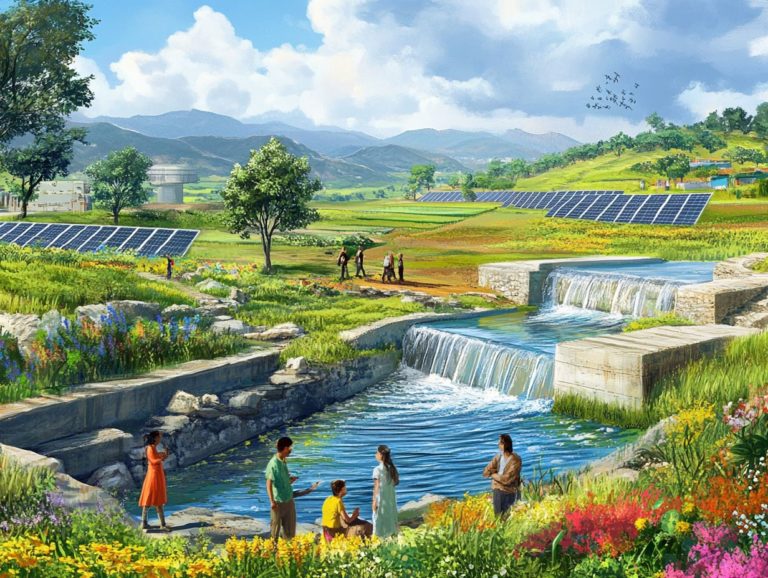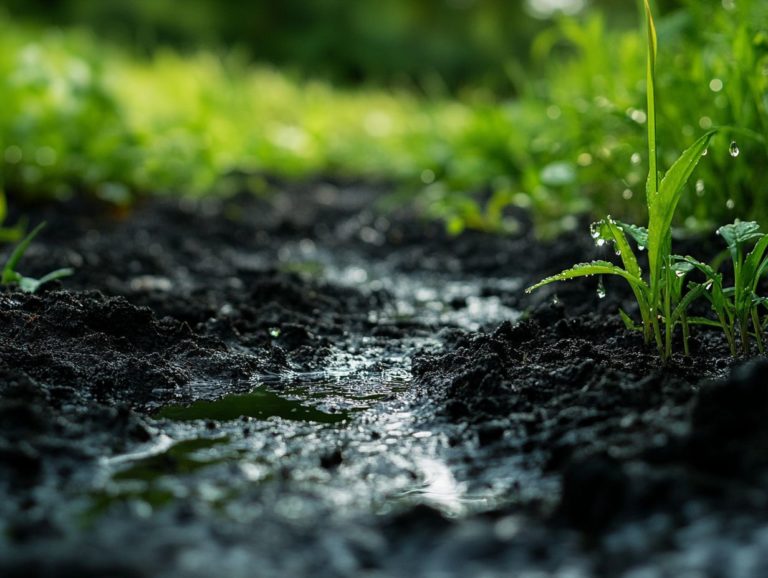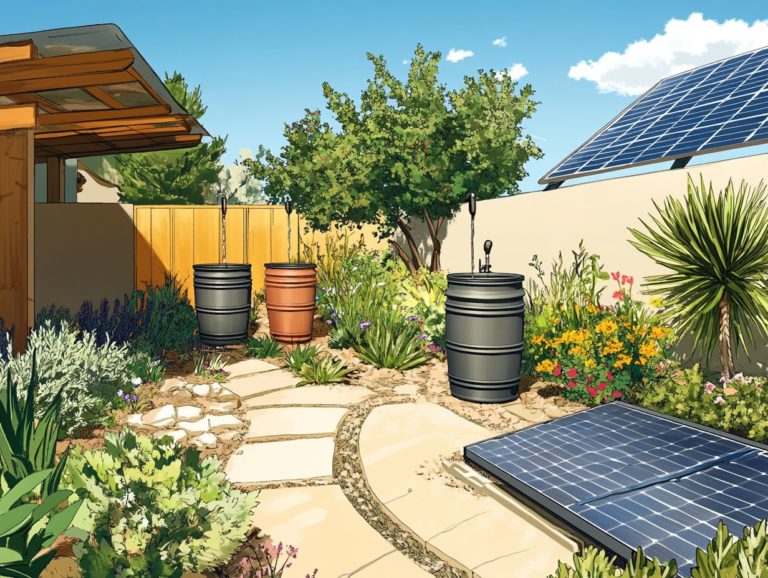5 Essential Components of Water Management
Water is undoubtedly one of our planet’s most vital resources, yet managing it effectively poses a significant challenge.
In this discussion, you will explore five essential components of water management: supply and demand, quality, infrastructure, conservation, governance, and water use. Each of these elements plays a crucial role in ensuring sustainable access to clean water.
You will also delve into the importance of water management in the context of climate change, uncovering key challenges, innovative technologies, and emerging trends.
Prepare to discover how thoughtful water management can shape a sustainable future.
Contents
- Key Takeaways:
- 1. Water Supply and Demand
- 2. Water Quality
- 3. Water Infrastructure
- 4. Water Conservation
- 5. Water Governance
- Why Is Water Management Important?
- Frequently Asked Questions
- What are the 5 essential components of water management?
- Why is water supply an important component of water management?
- How does water treatment contribute to water management?
- What is the role of water distribution in water management?
- Why is water conservation necessary in water management?
- How does water quality monitoring fit into water management?
Key Takeaways:
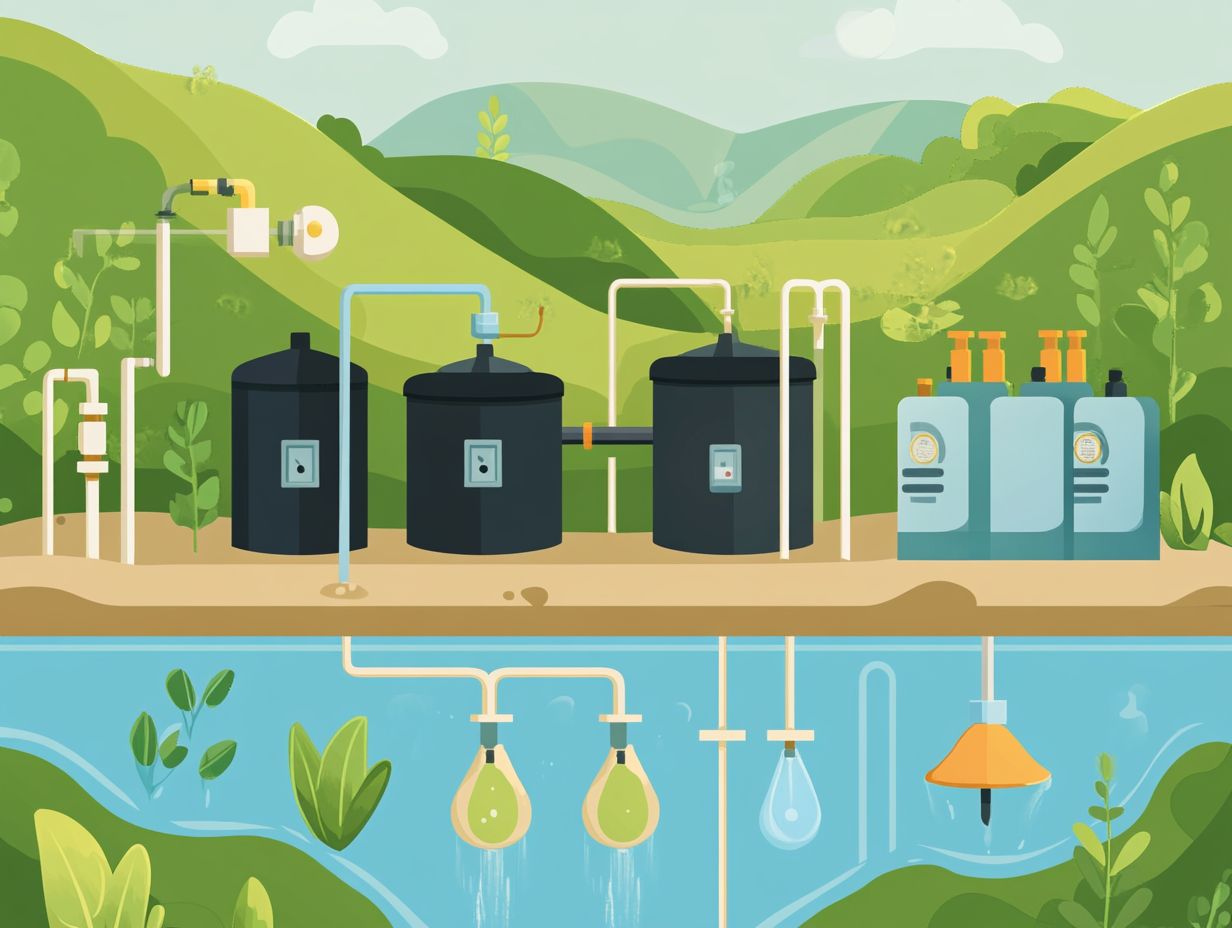
- Proper management of water supply and demand is crucial for sustainable resource usage.
- Maintaining water quality is essential for protecting human health, potable water sources, and the environment.
- Building and maintaining water infrastructure is vital for ensuring reliable access to clean water.
- Water conservation efforts are necessary to ensure a stable supply of water for future generations.
- Effective water governance is necessary for ensuring fair and equitable distribution of water resources.
1. Water Supply and Demand
Water supply and demand dynamics are the foundation of effective water management. This is crucial for achieving economic stability, preserving ecosystems, and building climate resilience.
By grasping these complex interactions, you have the power to create sustainable water management plans that align with the principles of water management in design, ensuring that available water resources are allocated efficiently to meet both present and future needs.
This approach highlights the importance of collaboration among various stakeholders, including government agencies, local communities, and the private sector. Together, they can craft policies that tackle the multifaceted nature of water scarcity.
As water resources dwindle due to climate change and population growth, adopting innovative strategies is essential. Integrated water resource management encourages a holistic perspective, recognizing that every policy decision influences the entire ecosystem.
By addressing supply constraints and high demand, you can pave the way for policies that not only manage current resources but also lay the groundwork for sustainable future practices. This ensures reliability and equity in water distribution.
2. Water Quality
Water quality stands as a cornerstone in ensuring that your water supply remains safe and potable. This is why comprehensive wastewater treatment protocols and effective water management plans are essential particularly those that align with EPA standards.
The significance of water quality cannot be overstated; it directly impacts public health and environmental sustainability. Proper wastewater treatment processes, such as sedimentation, filtration, and disinfection, are critical in removing harmful contaminants. This ensures that your community has access to clean water.
Maintaining rigorous water quality standards is essential for protecting aquatic ecosystems, which can suffer greatly from pollution and runoff. The EPA plays a pivotal role in regulating these standards, establishing guidelines that aim to minimize pollutants and safeguard both human health and natural resources.
By enforcing these regulations, the agency emphasizes the vital link between clean water and community well-being, thereby fostering a healthier environment for all.
3. Water Infrastructure
Robust water infrastructure is the backbone of effective water management. It enables you to achieve water efficiency while meeting the diverse needs of stakeholders in both urban and rural landscapes.
This infrastructure includes essential components. An extensive network of pipes transports water from its source to treatment facilities, where it is purified carefully for safe consumption.
Treatment plants are crucial in ensuring water quality and safety, employing advanced technologies to eliminate contaminants. Once treated, effective distribution systems guarantee that clean water reliably reaches your home or business.
Developing such infrastructure is vital for promoting environmental sustainability. To realize these objectives, collaboration among government agencies, private organizations, and community members is essential for effective planning, maintenance, and enhancements to the water system.
4. Water Conservation
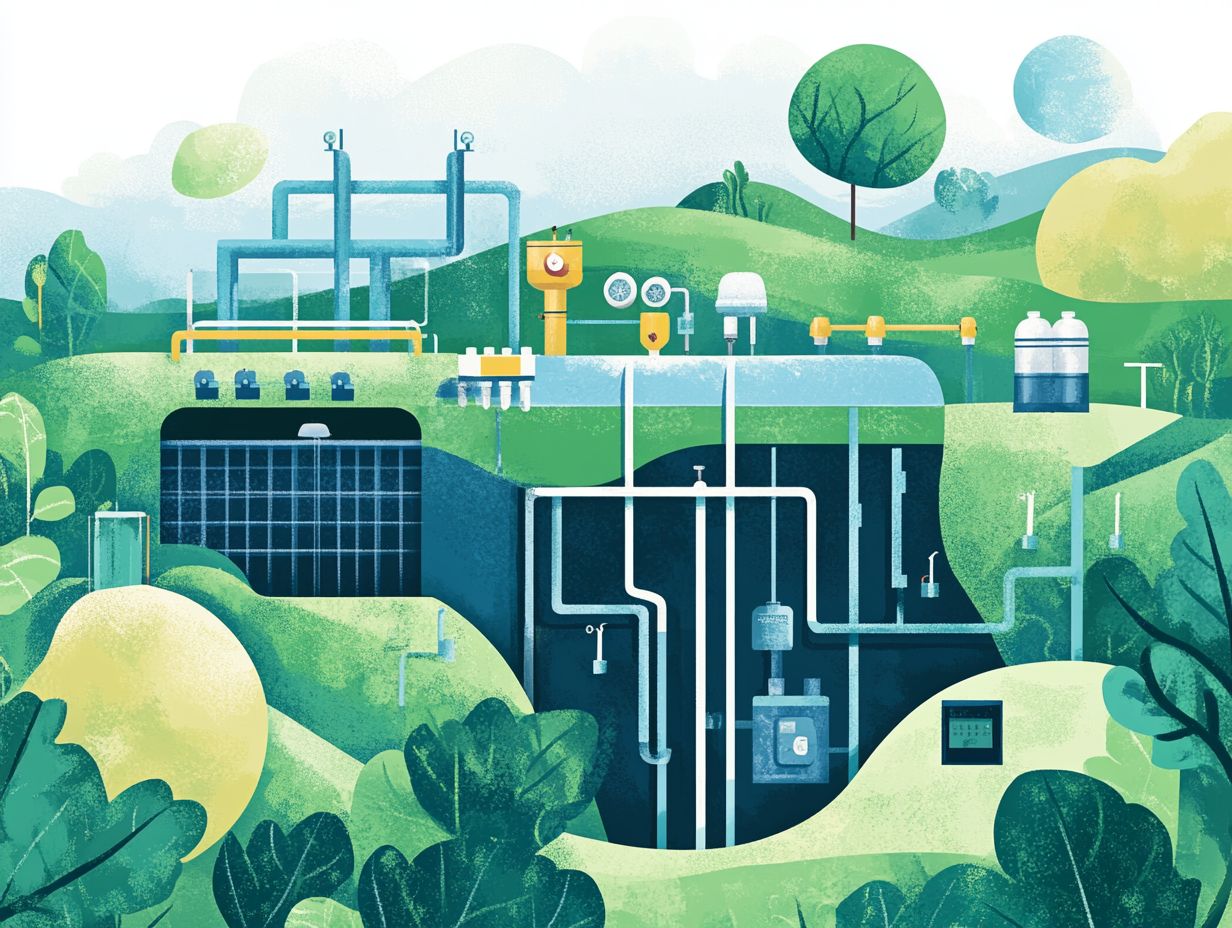
Water conservation is an essential practice that significantly enhances water efficiency. It harnesses water-saving technologies and promotes recycling initiatives to effectively address water scarcity.
By adopting a diverse array of strategies, you can implement rainwater harvesting systems, utilize drip irrigation in agriculture, and engage in greywater recycling programs reusing water from sinks, showers, and washing machines for other purposes like irrigation. These actions are critical for reducing waste and securing our water future!
Educational initiatives are vital in raising awareness about these practices. They help you grasp the profound impact on resource management.
Workshops and community outreach programs enable you to adjust your daily habits. This fosters a culture of conservation that extends beyond individual efforts and positively influences entire neighborhoods.
5. Water Governance
Effective water governance requires you to develop policies that ensure equitable access to water resources, involving people and promoting social equity through meaningful public participation.
This approach fosters collaboration among governments, communities, and private entities. It highlights the need for inclusive policy-making that considers the diverse needs and insights of all affected parties.
For example, successful governance frameworks like Integrated Water Resources Management (IWRM) a strategy that brings together everyone affected by water management showcase how customized strategies can tackle local water-related challenges effectively.
By integrating stakeholder feedback and traditional ecological knowledge, these frameworks pave the way for more resilient and sustainable water management practices that can adapt to changing conditions.
This underscores the vital importance of a collaborative and holistic approach in addressing pressing issues such as pollution and water scarcity.
Why Is Water Management Important?
Water management is undoubtedly one of our planet’s most vital resources, yet managing it effectively poses a significant challenge. Understanding the principles of water management in design stands as a cornerstone of sustainable development, essential for ensuring economic stability and fostering climate resilience in communities grappling with a myriad of water-related challenges, ranging from scarcity to quality concerns.
By embracing effective water management strategies, you can ensure equitable access to water resources, safeguard public health, and protect vital ecosystems. This approach is not merely important; it is a pivotal element of modern governance and planning.
When you implement robust water management practices, you directly influence health systems by diminishing waterborne diseases that can wreak havoc in communities, particularly in developing regions where sanitation infrastructure may fall short. Economically, industries reliant on water such as agriculture and manufacturing flourish when they have access to a consistent, clean supply.
Innovative practices like rainwater harvesting and wastewater treatment not only help alleviate shortages but also enhance water quality, thus protecting aquatic ecosystems. Cities that adopt integrated water resource management often witness improvements in urban resilience and efficiency, setting benchmarks for sustainable practices that can be emulated worldwide.
What Are the Key Challenges in Water Management?
Key challenges in water management need your attention, especially regarding water scarcity, climate change adaptation, and fair distribution of water resources among stakeholders. This requires innovative solutions and teamwork.
With rising temperatures and unpredictable rainfall, the strain on freshwater sources is becoming clear. It s crucial to implement strategic policies. Rapid urbanization and population growth increase water demand, intensifying competition among agricultural, industrial, and residential sectors.
Successful strategies, such as harvesting rainwater in urban areas and improving irrigation techniques in agriculture, highlight the importance of community involvement and technology. These initiatives not only conserve water but also promote sustainability and resilience in climate disruptions, paving effective pathways forward in this critical area.
How Can Water Management Help with Climate Change?
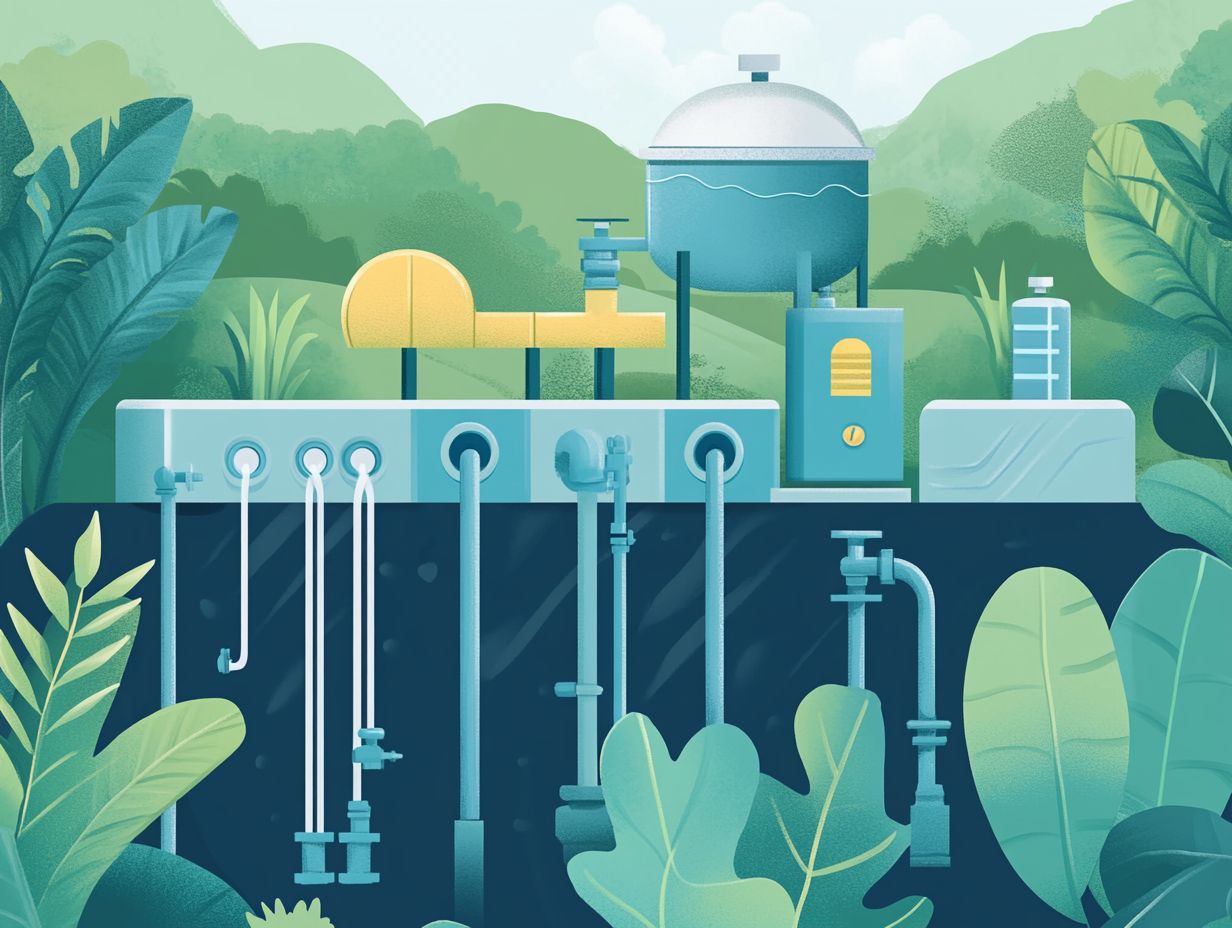
Effective water management is vital for adapting to climate change. It plays a crucial role in preserving ecosystems while addressing various water-related challenges faced by communities worldwide.
By using methods to keep our water safe, you can better navigate unpredictable impacts of climate change, like increased flooding, droughts, and shifts in rainfall patterns.
Take the Netherlands, for instance. They have implemented an advanced system of dikes and barriers to manage flood risks while integrating green spaces that absorb excess water. In California, innovative water conservation efforts and recycled water use have alleviated prolonged drought conditions and protected vital ecosystems.
These adaptive strategies show how a proactive approach to water management can act as a protective buffer against climate change effects. This ensures communities remain resilient and environments are sustainable for future generations.
What Are the Different Approaches to Water Management?
Different approaches to water management, like integrated water resource management, focus on crafting comprehensive management plans and adhering to water efficiency standards for optimal resource use.
These strategies emphasize collaboration among various stakeholders, including governments, local communities, and environmental organizations. This ensures that every voice is valued in decision-making. Principles such as sustainability, equity, and resilience guide these efforts, allowing tailored allocation of water resources to meet the unique needs of different environments whether in arid regions or flood-prone areas.
Embracing these approaches yields many benefits, including better water quality, enhanced agricultural productivity, and stronger ecological systems. However, we must act quickly to tackle potential challenges, which can include regulatory hurdles and limited financial resources. By considering local social dynamics and environmental conditions, adaptive management practices can lead to more effective outcomes across diverse settings.
How Can Technology Be Used in Water Management?
The integration of technology in water management, including new water-saving technologies, reverse osmosis (a method that cleans seawater to make it drinkable), and smart water management systems, enhances both efficiency and sustainability in resource utilization.
This modernization allows you to monitor water quality and usage in real time. This enables proactive decision-making that benefits your community or organization. With smart meters, you can easily access detailed usage data that helps identify leaks and reduce wastage.
For example, cities like Los Angeles have used smart irrigation systems to adjust schedules based on weather conditions, leading to significant water savings.
Reverse osmosis is a game-changer in desalination projects, effectively transforming seawater into potable water and addressing scarcity issues in dry regions. These innovations also conserve water and encourage responsible usage, fostering a sense of environmental stewardship.
What Are the Future Trends in Water Management?
Future trends in water management increasingly focus on sustainable development, climate resilience, and enhanced water quality. These require proactive strategies to tackle emerging water-related challenges directly.
These trends demand a multifaceted approach using new technologies, such as smart sensors and data analytics, to monitor water quality in real time. Community engagement is crucial, as local stakeholders play a vital role in decision-making processes, ensuring that water management strategies meet the unique needs of diverse populations.
Expect innovative policy frameworks to support these initiatives, fostering collaboration among governments, private sectors, and communities. Collectively, these elements are transforming the landscape of water resource management, creating a resilient system ready to withstand climate change and urbanization.
Frequently Asked Questions
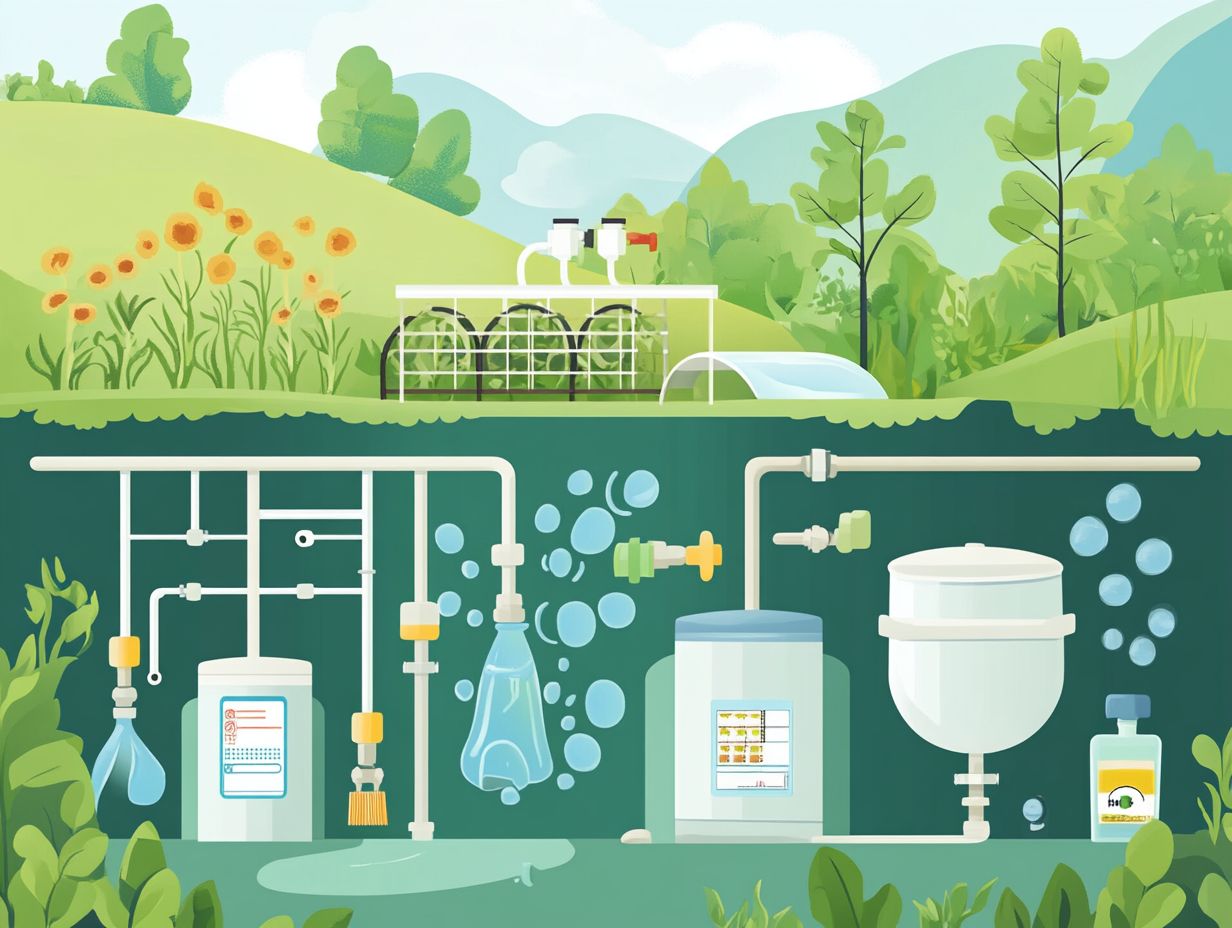
What are the 5 essential components of water management?
The 5 essential tools for water management are water supply, water treatment, water distribution, water conservation, and water quality monitoring.
Why is water supply an important component of water management?
Water supply is vital because it provides enough water for drinking, cooking, and sanitation.
How does water treatment contribute to water management?
Water treatment is crucial as it removes impurities and makes water safe for consumption. It also helps maintain the quality of water in the distribution system.
What is the role of water distribution in water management?
Water distribution delivers water to homes, businesses, and other locations, ensuring it reaches all areas within its service area.
Why is water conservation necessary in water management?
Water conservation reduces consumption and minimizes strain on resources. It also helps preserve the environment and ensures long-term sustainability of water supply.
How does water quality monitoring fit into water management?
Water quality monitoring identifies potential risks to public health and ensures water meets safety standards. It also detects changes in water quality and allows for necessary actions to maintain it.

